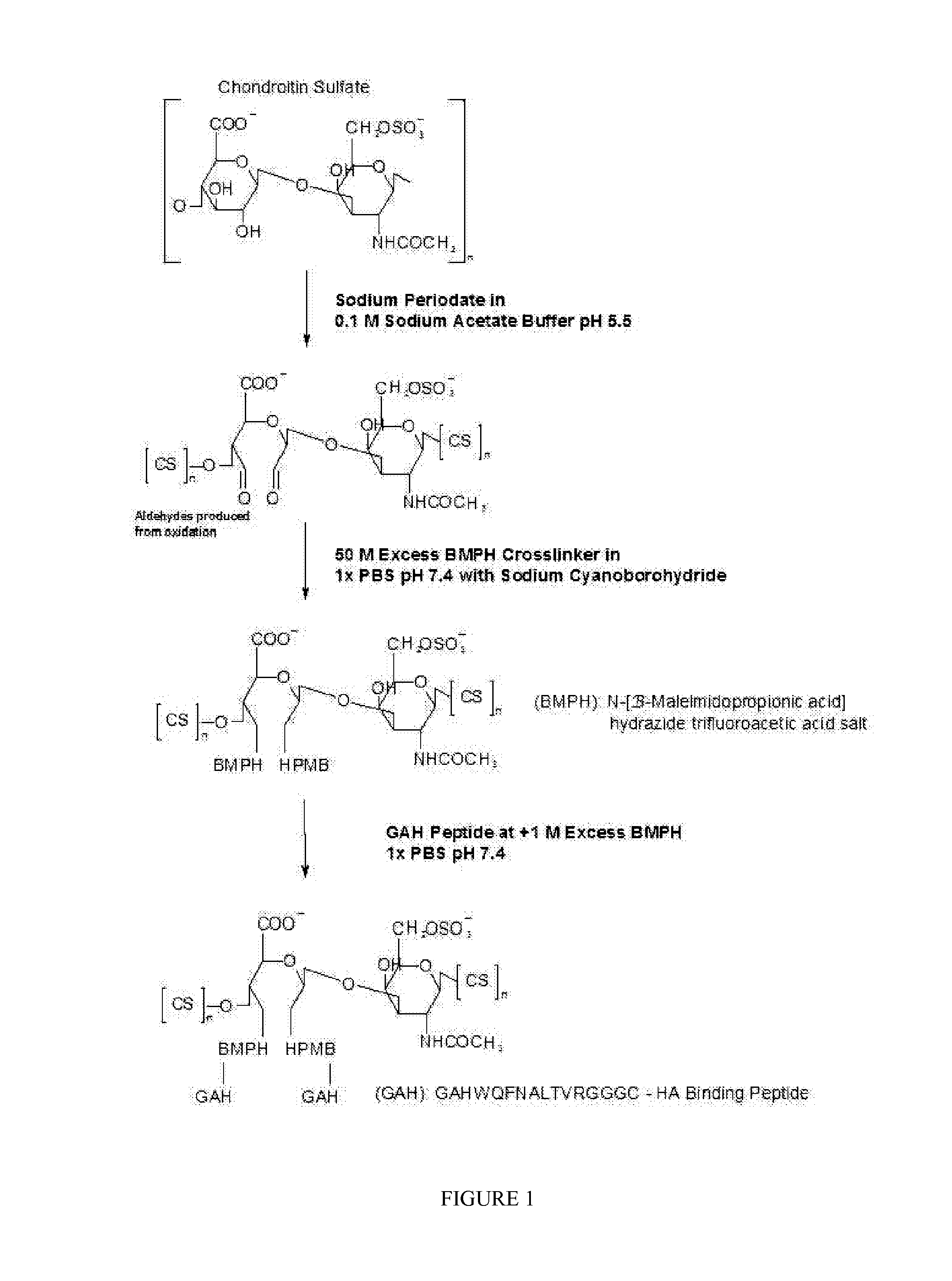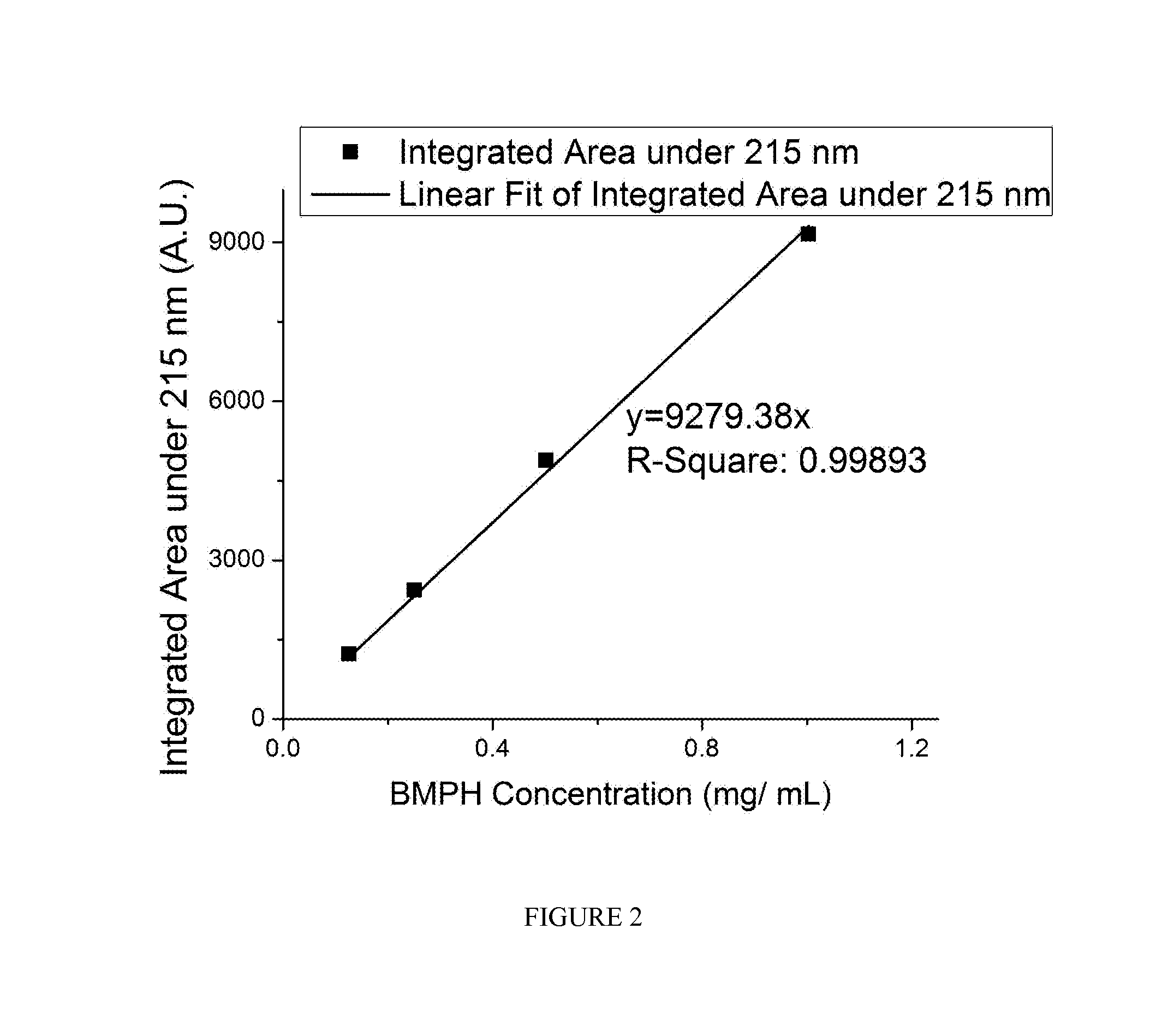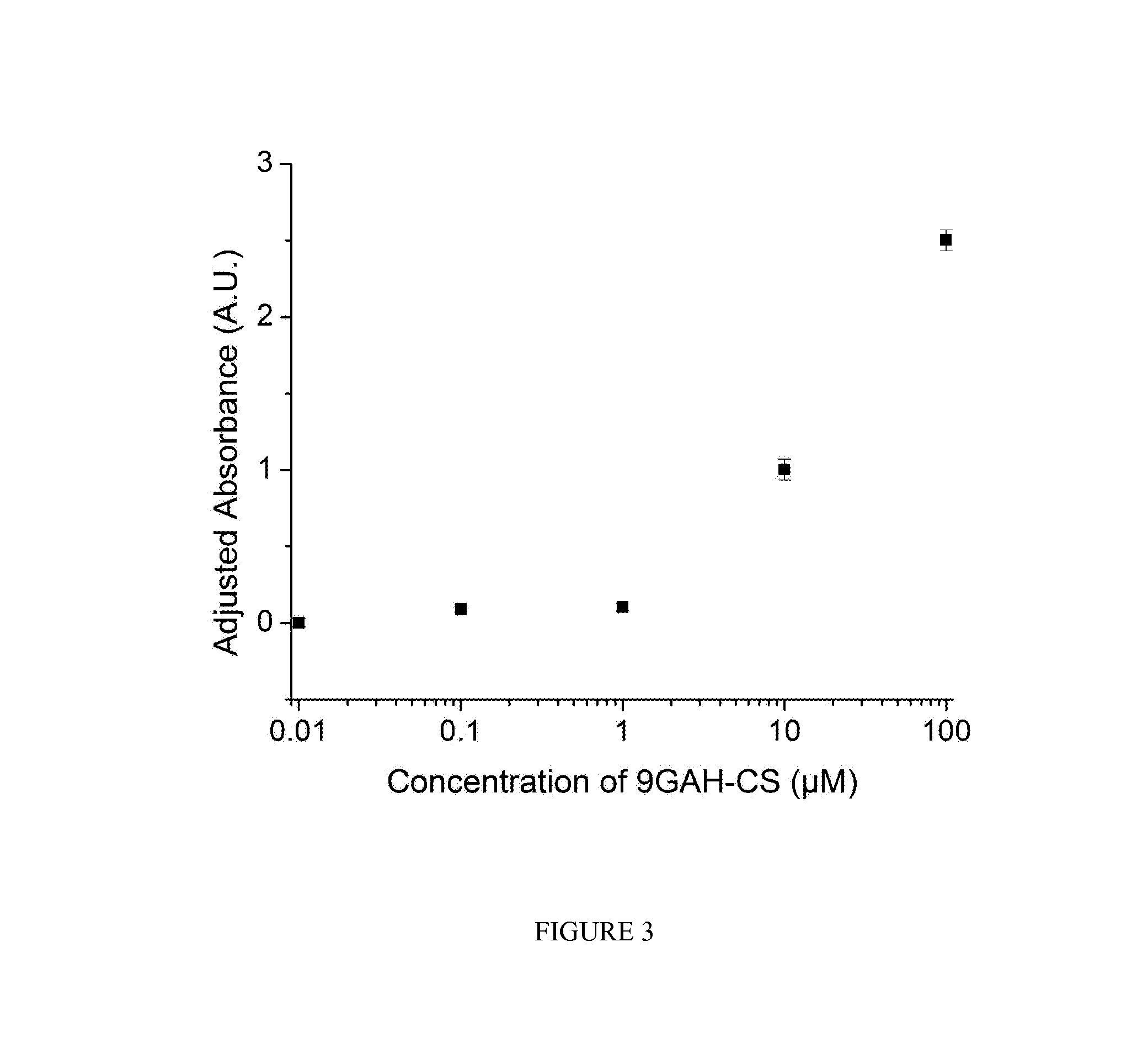Hyaluronic acid-binding synthetic peptidoglycans, preparation, and methods of use
a synthetic peptidoglycan and hyaluronic acid technology, applied in the field of hyaluronic acid-binding synthetic peptidoglycans, can solve the problems of reduced compressive strength, increased precocious wear, etc., to reduce the diffusion of proteases, reduce compressive strength, and increase pro-inflammatory cytokines and matrix metalloproteases
- Summary
- Abstract
- Description
- Claims
- Application Information
AI Technical Summary
Benefits of technology
Problems solved by technology
Method used
Image
Examples
example 1
Peptide Synthesis
[0380]All peptides were synthesized using a Symphony peptide synthesizer (Protein Technologies, Tucson, Ariz.), utilizing an FMOC protocol on a Knorr resin. The crude peptide was released from the resin with TFA and purified by reverse phase chromatography on an AKTAexplorer (GE Healthcare, Piscataway, N.J.) utilizing a Grace-Vydac 218TP C-18 reverse phase column and a gradient of water / acetonitrile 0.1% TFA. Dansyl-modified peptides were prepared by adding an additional coupling step with dansyl-Gly (Sigma) before release from the resin. Peptide structures were confirmed by mass spectrometry. The following peptides were prepared as described above: GAHWQFNALTVRGGGC (SEQ ID NO: 35), KQKIKHVVKLKGC (SEQ ID NO: 56), and KLKSQLVKRKGC (SEQ ID NO: 57).
example 2
Chondroitin Sulfate Functionalization and Synthetic Peptidoglycan Formation
[0381]The reaction schematic for the creation of the aggrecan mimic (i.e., GAH) can be seen in FIG. 1. Functionalization of the chondroitin sulfate (CS) (Sigma, St. Louis, Mo.) was accomplished using sodium periodate (Thermo Scientific, Waltham, Mass.) to oxidize the CS. By varying the reaction duration and sodium periodate concentration, the number of aldehyde groups produced by the oxidation reaction was controlled, values presented in Table 2. Table 2 details the sodium periodate concentration and the reaction duration needed to obtain the desired number of aldehydes per CS chain. Through progressive chemical reactions, schematic shown in FIG. 1, the number of BMPH attached per CS chain is assumed to equal the number of aldehydes produced and the number of hyaluronic acid (HA) binding peptides attached.
[0382]Based on the reaction duration and the concentration of sodium periodate, the number of peptides (a...
example 3
Binding of Synthetic Peptidoglycan to Hyaluronic Acid
Synthetic Peptidoglycan Binding to Immobilized Hyaluronic Acid
[0387]Hyaluronic Acid (HA, from Streptococcus equi, Sigma) at a concentration of 4 mg per mL, was immobilized to a 96-well plate (Costar, blk / clr, Corning, Coming, New York) overnight at 4° Celsius. Biotin labeled GAH peptides were bound, by way of BMPH, to functionalized CS at a concentration of 1 biotin-GAH per CS chain. Unlabeled GAH peptides bound to the remaining unreacted aldehydes of CS. Standard biotin-streptavidin detection methods were utilized to determine the degree of aggrecan mimic binding to the immobilized HA. Blocking of the HA surface was done for one hour with 1% Bovine Serum Album (BSA, Sera Care Life Sciences, Milford, Mass.) in 1×PBS solution. After washing with 1×PBS, the biotin-labeled aggrecan mimic was incubated in the well for 30 minutes and then washed with 1×PBS. Streptavidin-horseradish peroxidase (R&D Systems, Minneapolis, Minn.) solution ...
PUM
| Property | Measurement | Unit |
|---|---|---|
| molecular weight | aaaaa | aaaaa |
| oscillatory frequency | aaaaa | aaaaa |
| oscillatory frequency | aaaaa | aaaaa |
Abstract
Description
Claims
Application Information
 Login to View More
Login to View More - R&D
- Intellectual Property
- Life Sciences
- Materials
- Tech Scout
- Unparalleled Data Quality
- Higher Quality Content
- 60% Fewer Hallucinations
Browse by: Latest US Patents, China's latest patents, Technical Efficacy Thesaurus, Application Domain, Technology Topic, Popular Technical Reports.
© 2025 PatSnap. All rights reserved.Legal|Privacy policy|Modern Slavery Act Transparency Statement|Sitemap|About US| Contact US: help@patsnap.com



